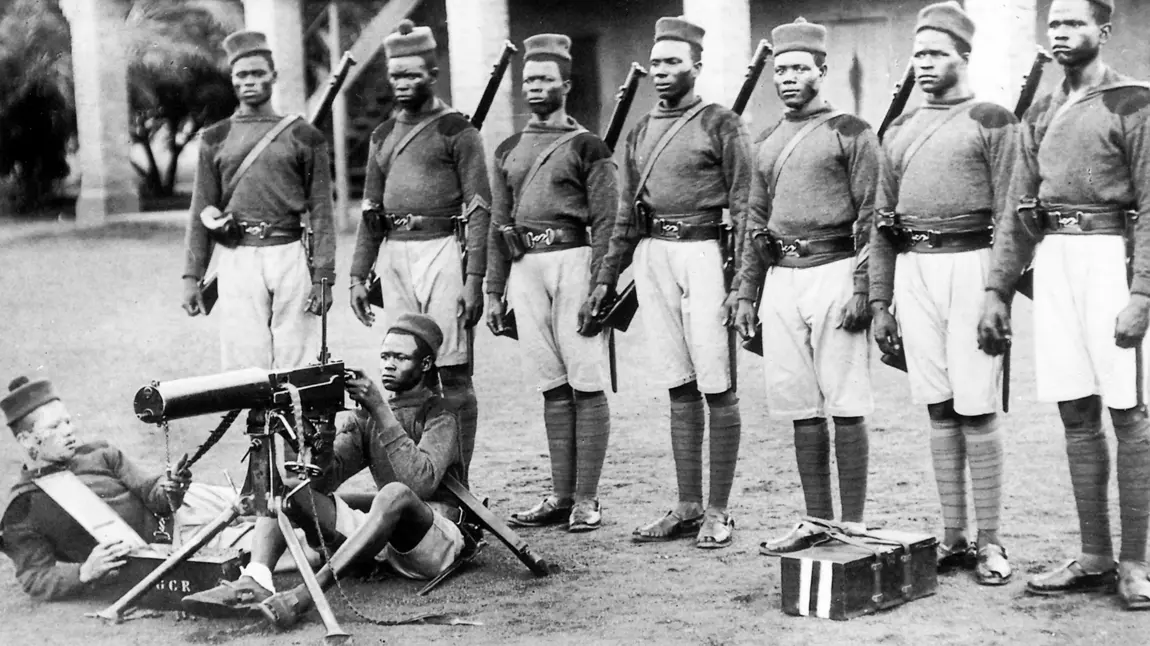Hidden black stories of the First World War

Black on both sides
Black on Both Sides: The hidden contributions of black soldiers to First World War is a HLF Young Roots project, led by Community Builders, a youth-led Social Enterprise from Haringey.
One hundred years ago Africans fought in Europe to protect the ‘way of life’ we enjoy today. This year Community Builders is exploring their relatively unknown contribution to the War hoping to uncover the role African and Caribbean soldiers played to both the Central and Allied powers.
Black soldiers fought bravely as part of colonial regiments such as the British West India Regiment, the West African Frontier Force, and the German Schutztruppe and Askari fighting forces. Between 1914 and 1916, the number of Askaris fighting in German East Africa quadrupled from 2,500 to 11,000.
The project is working with young people in North London to discover the stories of black servicemen in the UK who served in British Regiments. Some of these black British heroes, such as Walter Tull, fought with distinction and overcame colour-based restrictions to rise to the rank of officer. This is against the backdrop of a significant black community in Britain trebling to 30,000 between 1914 and 1918, many of who remained in Britain after the War.
This population of black people in Britain perhaps truly laid the foundations for modern multi-cultural Britain as we know it today – predating the Windrush Era by at least 30 years.
The Black on Both Sides Project workshops will begin in October 2015 and participants will visit archives and undertake workshops and accredited heritage training. At the end of the project a mobile app will share the information with a wider audience – watch this space!
To find out more about the Black on Both Sides project see the Community Builders website or follow them on Twitter.
The Caribbean’s Great War
The Caribbean’s Great War project is exploring the role of The West India Committee in the First World War.
The West India Committee is a 280 year old charity founded in Bishopsgate to protect West Indian trade from the expanding North American colonies. A century ago it played a crucial role in delivering the Caribbean’s First World War effort to British shores. It acted as a vehicle bridging West Indian home front efforts with the British military machine.
By 1918, the charity had raised millions of pounds in aid and administered over 16,000 Caribbean volunteers.
For the first time in over 100 years, this project is revealing the Committee’s unique view of First World War and what the Caribbean did to help win the war.
The project is exploring the West India Committee’s rich records which are kept in London and will hopefully reveal a complex tapestry covering centuries of history of the Atlantic. These include war diaries written by famous British and Commonwealth commanders, rare collections of photographs from the Palestine campaign, and a range of other fascinating items comprising the Committee’s continually revelatory archive.
The project will start with a striking exhibition this November at the Museum of London Docklands. The Caribbean’s Great War project will kick off with a fully loaded website complete with archives and galleries relating to the First World War. This will all coincide with events with the British Army to mark the centenary of the British West Indies Regiment’s formation. The exhibition and online archive will be free to the public.
Visit the West India Committee website to find out more about their on-going work.